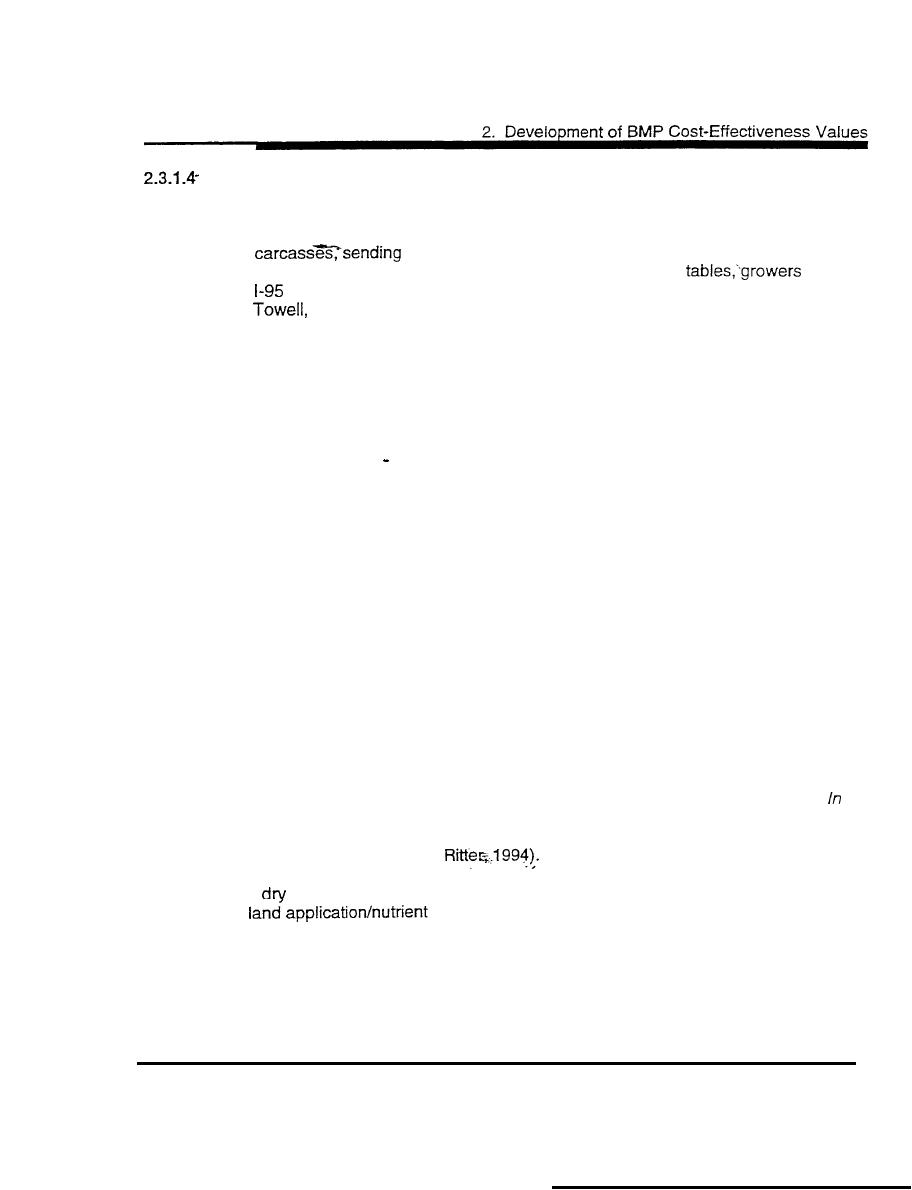
Composting of Poultry Mortality
Heat, disease outbreaks, and other factors routinely cause poultry mortality in
large operations. Growers have the option of incinerating or burying the
them to a rendering plant, or composting them on site. Due
to water quality and health concerns related to high water
east of
are being strongly discouraged from burying their poultry carcasses (B.
1994). The composting alternative is becoming more attractive because
growers can avoid the costs of rendering services and also obtain a usable
nutrient source. Poultry are typically composted in bins with alternating layers of
poultry fitter and a carbon source, such as peanut hulls. The composting process
can eliminate the disease hazard of the carcasses and provide a valuable
fertilizer as well.
In the lower half of the Tar-Pamlico basin, where poultry production is greatest,
approximately 75 90% of the producers have their poultry mortality sent to a
rendering plant (J. Parsons, 1994). The use of a rendering plant for mortality
disposal results in the complete removal of the birds as potential nutrient sources.
Composters would be an effective tool for reducing nutrient loads only if a less
effective practice, such as pit burial, was being practiced. Even in these
situations, the buried birds would be of greater concern from a public health
standpoint than from a nutrient loading standpoint. Because the large majority of
producers in the basin use rendering plants, there appears to be relatively few
situations where mortality cornposting could provide any level of nutrient load
reduction. We therefore conclude that cost-sharing for poultry mortality
composters is not an effective method for reducing nutrient loads to surface
waters in the Tar-Pamlico basin.
2.3.1.5
Dry Stacking
In the Tar-Pamlico basin, dry stacking is primarily used to store turkey and broiler
house litter before land application. The purpose of a dry stack structure is to
safely store animal wastes until they can be land-applied at agronomic rates.
and of itself, the dty stack structure does not promote any further nutrient
reductions than would occur if the waste were still lying on the floor of the
(The exception being in situations where
confinement house (W.F.
manure was previously stored open to rainfall and runoff.) The primary benefit of
a
stack is that it allows the farmer the storage flexibility to carry out a proper
management plan. Without a storage structure, the
farmer may be forced to land-apply when the risk of surface water pollution is
great, such as during the dormant season or before a rainy period. However, the
presence of a good storage structure does not ensure that the farmer will use
proper nutrient management practices. In fact, if the farmer is not diligent,
storage structures, such as dry stacks, could lead to situations with increased
25



 Previous Page
Previous Page
